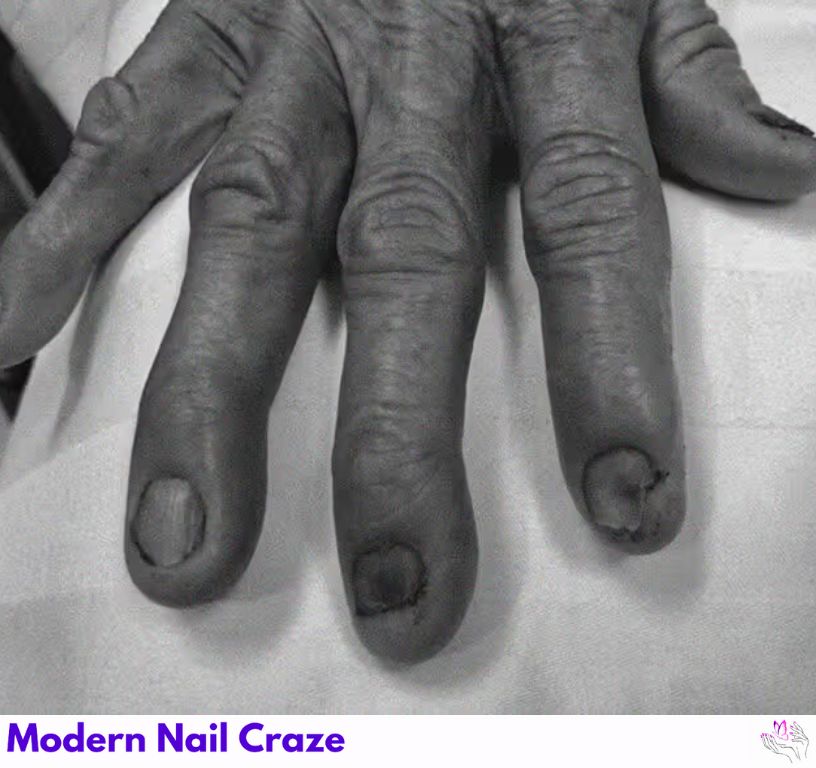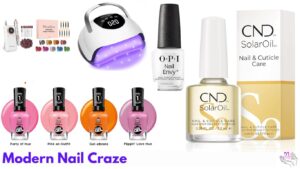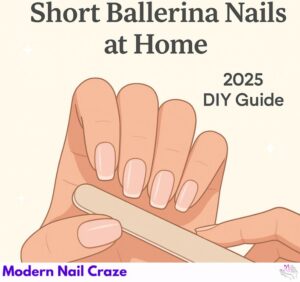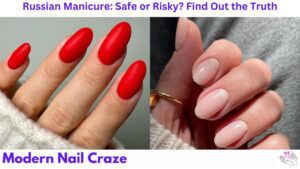Understanding Curved Nails and Their Causes

Have you ever looked at your nails and noticed a slight curve that wasn’t there before? While many dismiss it as a cosmetic issue, curved nails can sometimes indicate underlying health concerns. In this guide, we’ll dive into the types of curved nails, explore the possible causes, and highlight when to seek professional help. Your nails can be a window into your overall health—it’s time to understand what they’re trying to tell you.
There are different reasons why nails might curve downward, and in some cases, it can be linked to deficiencies or medical conditions. If you find yourself wondering, “Why do my nails curve down?“, it might be time to look into factors that could be influencing your nail health. The body has its ways of signaling issues, and your nails are one of them. Understanding these patterns can help in taking preventive steps before more serious conditions arise.
What Causes of Curved Nails?

Curved fingernails may be caused by harmless genetics, but they can also signal a variety of nutrient deficiencies or medical conditions. Understanding these patterns early helps you address potential health concerns proactively. Some cases may be mild and temporary, while others could point to something more serious requiring professional treatment.
Iron Deficiency and Nail Health
A lack of iron is one of the most common reasons for nails that curve downward, also known as koilonychia. This deficiency limits the production of healthy red blood cells, which transport oxygen throughout the body—including to your nails.
Symptoms of Iron Deficiency Anemia:
- Fatigue and weakness
- Pale skin
- Brittle nails
- Hair loss
- Curved or spoon-shaped nails
Treatment Options:
- Iron-rich foods: red meat, leafy greens, lentils, and fortified cereals
- Iron supplements: as recommended by a doctor
- IV iron therapy: in cases of poor absorption
How to Treat Iron Deficiency Anemia?
- Eating iron-rich foods: Include beef, pork, lamb, liver, broccoli, kale, collard greens, pinto beans, and black-eyed peas in your diet.
- Taking a high-dose supplement: A doctor may recommend or prescribe a sufficiently high dosage of iron supplements.
- Intravenous supplementation: A healthcare professional may suggest this for individuals who are unable to pass iron through their gastrointestinal tract effectively.
This simple approach to iron intake can make a significant difference in improving nail health and overall well-being.
Relayted: Need Your Nail Polish to Dry Fast? Discover This Secret
Curved Nails vs. Clubbed Nails
| Feature | Curved Nails | Clubbed Nails |
| Severity | Mild, cosmetic | Severe, often health-related |
| Fingertips | Normal | Bulbous, swollen |
| Nail Curve | Gentle arc | Pronounced downward bend |
| Medical Terms | Koilonychia | Finger clubbing |
Clubbing is often a sign of chronic lung disease, heart problems, or low oxygen levels. If your nails curve and your fingertips swell, consult a healthcare provider.
Raynaud’s Disease & Circulation Problems
Raynaud’s disease narrows arteries, reducing blood flow to fingers and toes, and may cause nail curvature.
Symptoms include:
- Color changes (white → blue → red)
- Cold fingers and toes
- Numbness or pain
In severe cases, Raynaud’s may damage nail beds and lead to deformities. It’s often triggered by cold or stress and may require lifestyle adjustments or medication.
Hemochromatosis: Too Much Iron
This genetic disorder causes the body to absorb excess iron, potentially leading to nail changes and organ damage.
Common symptoms:
- Curved nails
- Fatigue
- Joint pain
- Liver issues
- Bronze or gray skin tint
Managing iron levels through phlebotomy or dietary changes is crucial to prevent complications.
Lupus and Nail Curvature
Systemic lupus erythematosus (SLE) causes inflammation across various organs, including the nails.
Symptoms include:
- Curved or brittle nails
- Joint pain
- Facial rash (butterfly shape)
- Photosensitivity
- Fatigue
Treatment focuses on suppressing the immune system using steroids or immunosuppressants. Regular monitoring helps reduce flare-ups.
Types of Curved Nail Changes
1. Spoon Nails
These soft, scooped-out nails can hold water and are a classic sign of iron deficiency anemia. The center dips while the edges lift upward.
2. Nails That Curve at the Tips
These may be naturally occurring or created with press-on nails. Though trendy, it’s important not to confuse a health-related change with fashion styling.
3. Nails That Curve Around the Sides
Common in acrylic extensions, this look can reshape naturally downward-curving nails. Be cautious of frequent use to avoid nail thinning or breakage.
4. Clubbed Nails
Associated with low oxygen levels, they are often seen in people with lung disease or heart issues. They require immediate medical evaluation.
5. Brittle and Curved Nails
Brittleness combined with curvature may signal thyroid disorders, vitamin deficiencies, or age-related changes.
🩺 When to See a Doctor
Consult a healthcare provider if you experience:
- Sudden or progressive nail shape changes
- Nail pain, discoloration, or thickening
- Symptoms like joint swelling, fatigue, or hair loss
Early intervention can identify underlying diseases and prevent long-term complications.
5 Best Products for Curved Nails & Nail Health
1. OPI Nail Envy Nail Strengthener
✅ Strengthens weak or curved nails
✅ Enriched with calcium and protein
💬 Ideal for daily use under polish or alone
2. Kerasal Multi-Purpose Nail Repair
✅ Helps with nail appearance and structure
✅ Great for damaged or misshaped nails
💬 Visible results in 1 week
3. Beurer Electric Nail Care Set
✅ Professional-grade grooming at home
✅ Gently shapes curved or thickened nails
💬 Includes filing, buffing, polishing tools
4. Jojoba Oil by Cliganic (Organic)
✅ Deeply hydrates nail beds and cuticles
✅ Helps prevent nail curling from dryness
💬 100% pure & cold-pressed
5. NailTek Intensive Therapy 2
✅ Designed specifically for soft, peeling nails
✅ Strengthens natural nail shape
💬 Fast-drying formula
✅ Summary
Curved nails can result from genetics, nutrient deficiencies, or serious medical issues like anemia, psoriasis, Raynaud’s, lupus, and more. Understanding the symptoms and when to seek care can help maintain both nail and overall health.
Make sure to:
- Monitor your nail shape regularly
- Eat a balanced diet rich in iron, B12, and vitamin D
- Avoid aggressive nail treatments if nails are weak or brittle
❓ FAQs About Curved Nails
What deficiency causes curved nails?
Often, it’s iron deficiency anemia. Without enough iron, nails can become brittle and curve downward into a spoon-like shape.
What do vitamin D deficiency nails look like?
They may appear brittle, peel easily, or develop white spots. Vitamin D helps calcium absorption, crucial for nail strength.
What do B12 deficiency nails look like?
They may develop dark lines, look pale, or turn bluish at the base due to poor oxygen flow.
What causes curves in fingernails?
Besides nutrient deficiencies, curved nails may be caused by lung disease, heart conditions, thyroid issues, or even genetics.
Are curved nails always a concern?
Not always. Some people naturally have curved nails. However, if the curve worsens or is paired with other symptoms, it’s time to consult a doctor.
🧷 Related Reading
- Expert Secrets Safest Removing Press-On Nails & Avoid Nail Damage
- 13 Best Nail Glue for Press-On Nails You Must Try
- The Shocking Truth of Hard Gel, Soft Gel, Gel Polish, Builder Gel
Looking for visual inspo? Check out our gallery of curved nails designs for elegant styles and healthy options.
Related Post:





